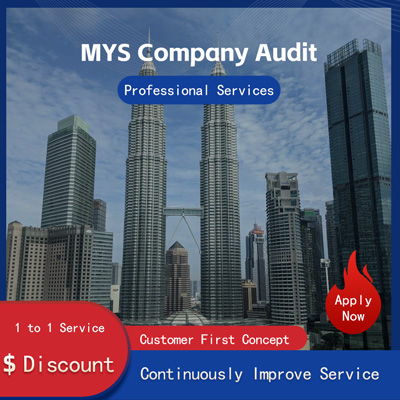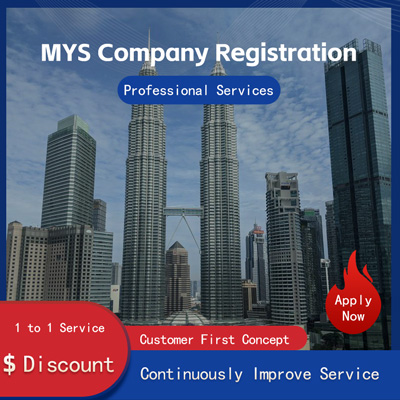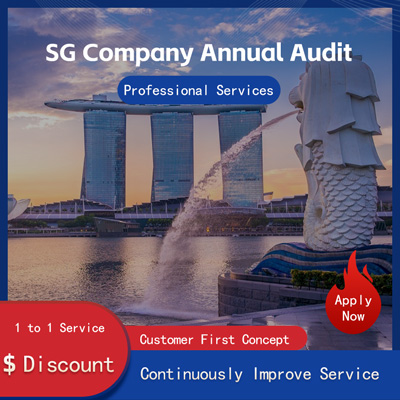
Analysis of the Whole Process for Mainland Enterprises to Distribute Dividends to HK Companies
A Comprehensive Guide to Smoothly Distributing Dividends from Mainland Enterprises to Hong Kong Companies
As the economic integration between mainland China and Hong Kong deepens, an increasing number of mainland enterprises are choosing to set up subsidiaries or holding companies in Hong Kong to better expand overseas markets, optimize resource allocation, and enjoy tax incentives. Against this backdrop, the distribution of dividends from mainland enterprises to their Hong Kong subsidiaries has become an important issue in cross-border financial management. This article will provide readers with a comprehensive and practical operational guide from the perspectives of policy regulations, operational processes, and tax planning.

I. Policy and Regulatory Framework
According to the Arrangement between the Mainland and the Hong Kong Special Administrative Region on Avoiding Double Taxation and Preventing Tax Evasion, dividends paid between eligible enterprises can enjoy preferential tax rates or even be exempted. Specifically, when a mainland resident enterprise pays dividends to its Hong Kong subsidiary, if one of the following conditions is met, the amount can apply for a preferential withholding tax rate of 5%
1. The Hong Kong company holds at least 25% of the shares of the mainland enterprise;
2. The recipient of the dividend is a company registered in Hong Kong and whose actual management institution is located in Hong Kong.
It should be noted that the Notice of the State Administration of Taxation on Relevant Issues Concerning the Implementation of the Arrangement further clarifies the relevant recognition standards and requires enterprises to provide sufficient proof materials to support their qualification applications. In practice, it is crucial to ensure that all documents are complete and submitted to the competent tax authorities in a timely manner.
The Enterprise Income Tax Law and its implementing regulations also stipulate several circumstances where tax benefits cannot be enjoyed, such as cases involving tax suspicions or failure to fulfill corresponding obligations. Potential risks should be assessed in advance during the planning stage, and reasonable measures should be taken to avoid them.
II. Detailed Operational Process
1. Internal Decision-Making Procedure
First, the mainland parent company must convene a board meeting or shareholders' general meeting to review and approve the proposal regarding the distribution of dividends to the Hong Kong subsidiary. This process not only determines the amount of distribution but also decides whether adjustments to capital reserves or retained earnings are necessary, forming a formal resolution document.
2. Preparation of Necessary Documentation
Next, a series of key documents need to be collected to support subsequent declaration work. These typically include but are not limited to
The latest audited financial statements of the parent company;
Equity structure diagrams and related proof documents of the subsidiary;
Copies of board/shareholders' meeting resolutions;
Bank account information forms.
It is worth noting that in some cases, additional specific proof materials may be required, such as certificates of overseas investment filing and approval documents from the State Administration of Foreign Exchange.
3. Completion of Tax Declaration
After completing the above preparations, the non-resident enterprise income tax withholding declaration form and other relevant forms can be submitted through the electronic tax bureau system. During this process, it is essential to accurately fill out all data and strictly adhere to the specified time limits for submission tasks. At the same time, complete records should be kept for future verification.
III. Tax Planning Strategies
To minimize overall tax burdens, enterprises should consider multiple factors when formulating dividend distribution plans. The following suggestions may help achieve better results
1. Make full use of bilateral tax treaties As mentioned earlier, the arrangement provides many favorable conditions for enterprises in both regions. When designing structures, priority should be given to utilizing these rules to reduce unnecessary cost expenditures.
2. Reasonably arrange cash flow directions In addition to direct transfers, indirect methods can also be used to achieve profit transfers, such as operating through intermediate holding platforms. However, it should be noted that this method may increase complexity and compliance difficulties; therefore, pros and cons must be carefully weighed.
3. Pay attention to the impact of exchange rate fluctuations Due to cross-border transactions, unavoidable influences from foreign exchange market changes will occur. It is recommended to closely monitor the latest developments and adjust budget plans appropriately to address challenges brought by uncertainty factors.
4. Strengthen internal control mechanism construction Establishing a sound internal audit system is significant for preventing legal risks. Especially in handling sensitive business areas, more attention should be paid to detail control to ensure each step complies with legal requirements.
IV. Case Analysis
Taking a well-known internet giant as an example, the company has actively expanded into Southeast Asia in recent years and established a regional headquarters in Hong Kong to coordinate various affairs. During its annual financial report release conference, management revealed that they had successfully completed their first large-scale dividend payout action. According to disclosures, tens of billions of yuan in cash dividends were distributed to Hong Kong subsidiaries with shareholding ratios exceeding 50%. The entire process took about three months, during which all statutory procedures were smoothly completed while achieving minimal tax burdens.
This successful case fully demonstrates the importance of scientific planning. Not only does it reflect the company's forward-looking strategic vision at a high level, but it also reflects the ability of team members to collaborate efficiently. More importantly, the experience gained through this practice undoubtedly lays a solid foundation for similar projects in the future.
V. Conclusion
In summary, distributing dividends from mainland enterprises to Hong Kong companies is both an opportunity-filled and challenging task. Only by thoroughly understanding relevant policies and regulations and flexibly applying various tools based on actual circumstances can enterprises truly maximize their interests. Hopefully, the information provided in this article will inspire practitioners and help them steadily advance in complex and ever-changing commercial environments!
Helpful (0)
No help (0)
Still have questions after reading? More than 98,000 users have contacted us. Please fill in the following information to obtain business information.

Next Article
HK Shareholders and Its Impact on Corporate Nature Essential Facts You Must Know
Jun 17, 2025Service Scope
MoreRecommended for You
- Starting a Company in Singapore Is Easier Than You Think! A Step-by-Step Guide from Registration to Launch, and How to Seize Your Next Big Entrepreneurial Opportunity
- What Special Procedures Do You Need to Open a Company in Singapore? This Practical Guide Will Get You Started Smoothly!
- Do Singapore Companies Really Need Annual Audits? Here’s Why They Matter and How They Affect Your Business
- Complete Guide to Singapore Company Annual Filing A Must-Read Handbook for Business Owners
- How to Start a Company in Singapore A Step-by-Step Guide to the Process and Benefits
- How to Register a U.S. Business for Your Singapore Company? A Step-by-Step Guide to Master the Entire Process
- Dollar NRA Accounts Unlocking New Opportunities in Wealth Management - Have You Tried One Yet?
- Under a VIE structure, how do domestic shareholders pay income tax? Here are the key issues you need to understand
- Step-by-Step Guide to Easily Register a Company in Singapore - Key Steps Fully Explained!
- Step-by-Step Guide to Registering a Company in Singapore and Easily Unlocking Global Markets
- Opening a Personal Bank Account in Singapore? Here’s a Step-by-Step Guide to Help You Through the Whole Process and Key Things to Watch Out For!
- How to Choose a Reliable Accounting Firm to Manage Your Finances When Starting a Business in Singapore
- Thinking of starting a company in Singapore? Here’s what you need to know about registration requirements!
- Why Are More People Choosing to Register a Company in Singapore? A Simple Guide to the Full Process and Benefits for Individuals
- How to Start a Company in Singapore? A Complete Guide to the Registration Process and Practical Tips
- How to Handle Accounting and Tax Filing for a Singapore Company? Key Steps and Important Tips You Should Know
- Standard Chartered Bank Singapore Smarter, Easier Money Management
- How to Register a Company in Singapore? A Step-by-Step Guide with Required Documents and Tips to Avoid Common Mistakes
- Why Are More and More Chinese People Starting Companies in Singapore? There’s Actually a Lot Behind It
- Want to open a bank account in Singapore? Here's a step-by-step guide to help you get started from scratch!


 ONE
ONE








Customer Reviews
Small *** Table
December 12, 2024The experience was very good. I was still struggling to compare it with other companies. I went to the site a few days ago and wanted to implement it as soon as possible. I didn't expect that everything exceeded my expectations. The company is very large, with several hundred square meters. The employees are also dedicated and responsible. There is also a wall of certificates. I placed an order on the spot. It turned out that I did not make a wrong choice. The company's service attitude is very good and professional. The person who contacted me explained various things in detail in advance. After placing the order, the follow-up was also very timely, and they took the initiative to report the progress to me. In short, I am very satisfied and recommend this company!
Lin *** e
December 18, 2024When I first consulted customer service, they recommended an agent to me. They were very professional and patient and provided excellent service. They answered my questions as they came in. This 2-to-1 service model is very thoughtful. I had a lot of questions that I didn’t understand, and it’s not easy to register a company in Hong Kong. Fortunately, I have you.
t *** 7
December 19, 2024I originally thought that they only did mainland business, but I didn’t expect that they had been doing Hong Kong business and were doing very well. After the on-site interview, I decided to ask them to arrange the registration of my Hong Kong company. They helped me complete it very quickly and provided all the necessary information. The efficiency was awesome. It turns out that professional things should be done by professionals.👍
b *** 5
December 16, 2024In order to register a company in Hong Kong, I compared many platforms and stores and finally chose this store. The merchant said that they have been operating offline for more than 10 years and are indeed an old team of corporate services. The efficiency is first-class, and the customer service is also very professional.